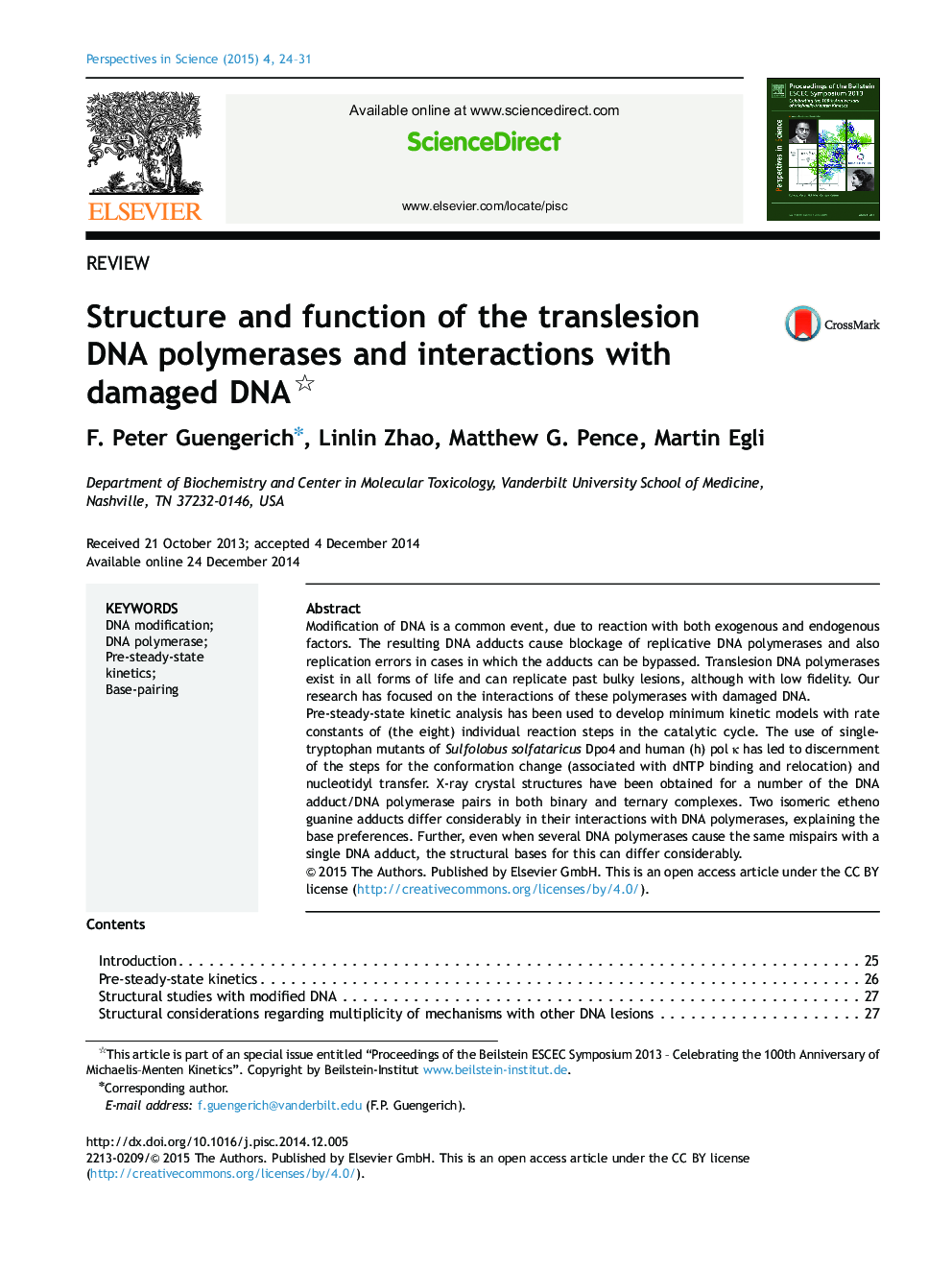| Article ID | Journal | Published Year | Pages | File Type |
|---|---|---|---|---|
| 2061682 | Perspectives in Science | 2015 | 8 Pages |
Modification of DNA is a common event, due to reaction with both exogenous and endogenous factors. The resulting DNA adducts cause blockage of replicative DNA polymerases and also replication errors in cases in which the adducts can be bypassed. Translesion DNA polymerases exist in all forms of life and can replicate past bulky lesions, although with low fidelity. Our research has focused on the interactions of these polymerases with damaged DNA.Pre-steady-state kinetic analysis has been used to develop minimum kinetic models with rate constants of (the eight) individual reaction steps in the catalytic cycle. The use of single-tryptophan mutants of Sulfolobus solfataricus Dpo4 and human (h) pol κ has led to discernment of the steps for the conformation change (associated with dNTP binding and relocation) and nucleotidyl transfer. X-ray crystal structures have been obtained for a number of the DNA adduct/DNA polymerase pairs in both binary and ternary complexes. Two isomeric etheno guanine adducts differ considerably in their interactions with DNA polymerases, explaining the base preferences. Further, even when several DNA polymerases cause the same mispairs with a single DNA adduct, the structural bases for this can differ considerably.
